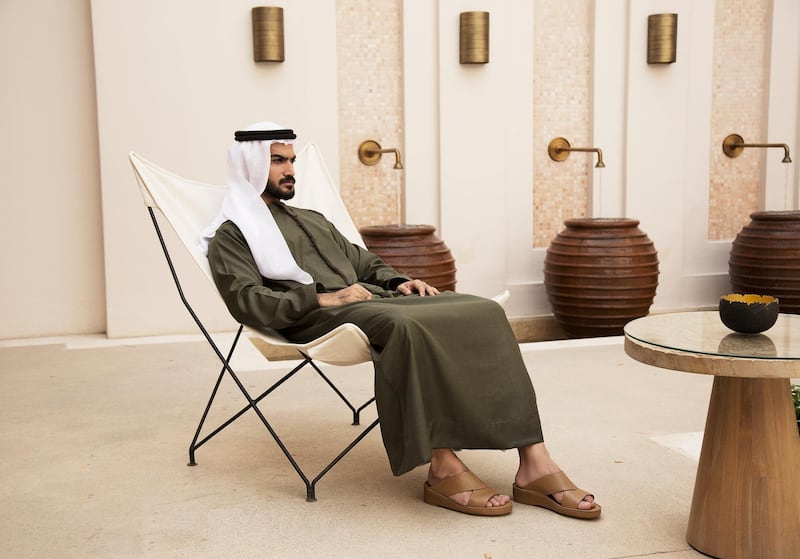For most people in the region, the Middle Eastern-style sandal is easily distinguishable.
Although pairs today come in a variety of designs, finishes and colours, there are some elements that remain the same. For a start, they are always open-toe. They usually cover the upper part of the foot, needing no slingback, or strap behind the heel. The end result is sophisticated, and suitable for formal and casual occasions, and traditional and modern attire.
While the style may be common knowledge, less is known about what led to this signature look. “Traditionally, Arab sandals were made in such a way for various cultural reasons,” says Salem Al Remeithi, founder of luxury UAE sandal brand Albatar.
“Shoes had to be taken off during prayer times, which is five times a day, hence they had to be easy to slip on and slip off. Weather conditions played a huge role in their design as well. Arab sandals were made open-toed because wearing socks and enclosed shoes is not comfortable in hot, humid climates. It’s good to let your feet breathe, especially when there is a lot of walking to do on a regular basis.”
Tracing history
To understand exactly how the Arab sandal came about, it is important to go back in time. Salem Al Mheiri, co-founder of Abu Dhabi store Duca & Das, says back in the day, locals eschewed footwear altogether.
“Most people did not wear shoes because of the sandy environment. In the winter, Bedouins used to wear heavy socks called ‘zarbool’ made of goat or camel hair to keep their feet warm. They used to also make and sell them to people in coastal cities.”
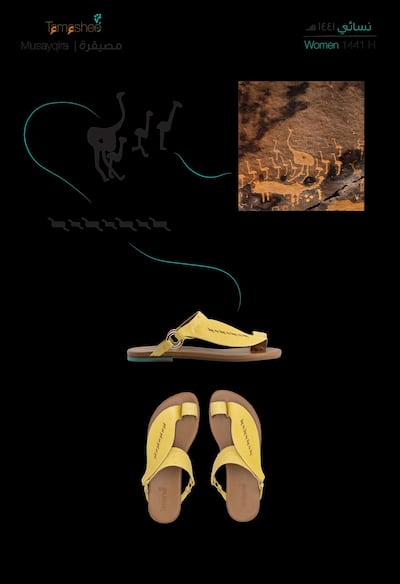
So, how did the concept of the Arab sandal come about? Mohammed Kazim, co-founder of another luxury footwear brand, Tamashee, says that like many things around the world, the sandal got its early influences from other countries and cultures.
“Trade routes played a huge role in how we do things,” he says. “The design for open-toe sandals came from India. However, when they broke down due to wear and tear, they were taken for repairs to [local] craftsmen, who would use little metal rings to stitch them back in place, which lent it that signature look.”
It's what gave way to "naal" – what Al Mheiri describes as all-season footwear that is the most popular style with Emiratis today. "A more modern version of this is the 'naal bu sbaa', where the big toe is separated from other toes with a piece of leather over it, with the rest of the foot covered with a wing-shaped piece of leather. This style remains popular even today."
The evolution
While the style remains more or less the same, in the past few decades the sandal has incorporated numerous changes in terms of materials, stitching and quality. “They were seen as an item of necessity in the past, but today they are a statement of style,” says Al Remeithi. “There is a significant difference in the type and quality of leather used, for instance. However the simplicity of the sandal remains and that is what makes it beautiful.”
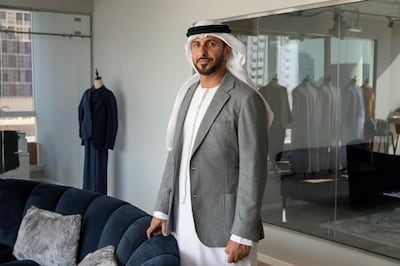
The history of the sandal ensures it holds a special place in the hearts (and wardrobes) of many. As Al Remeithi puts it: “They have been a part of my family’s culture well before I was born – something every male member of the family, both young and old, follow to this date. Buying or gifting a brand-new pair of sandals on the occasion of Eid has been a tradition for generations and this is something we look forward to.”
It is this same emotional connection that led him to starting Albatar, which pays tribute to his home country. This year, the brand’s Ramadan collection was inspired by the art and architecture around the UAE – from its landmarks to the desert sand across the seven emirates. It even included an Abu Dhabi sandal, dedicated to Al Remeithi’s home town.
“The sandal is and always will be something very special to me as it preserves our culture and heritage, while giving the discerning local community a fashionable choice of footwear, with new designs and colour palettes to play with.”
A fashionable statement
It is not only local brands that realise the potential marketability of the Arab sandal. In the past few decades, a number of international luxury houses have released their own versions.
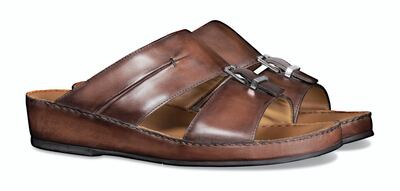
In 2013, Italian shoe designer Cesare Paciotti launched a collection specifically curated for the UAE market. Meanwhile, Berluti, a subsidiary brand of LVMH, made headlines in 2017 when it released limited-edition Ramadan sandals, complete with calligraphic motifs. The brand continues to pay tribute to local tradition – it had a Ramadan sandal again this year, the newest addition to its Dubai line. Other international brands that have jumped on to the bandwagon over the years are Tod’s, Givenchy and Loro Piana.
“For every international brand, it is important to adapt and cater to the local population,” says Satish Patil, senior brand manager at Steve Madden, which has been creating collections for the holy month since 2013.
“In this region, Arab sandals and slippers are still the preferred footwear among Arab nationals and therefore we sell them all year round. It is essential that we create styles and designs keeping in mind local cultures, tastes and preferences.”
Clearly what was once a necessity has now transformed into a fashion statement. Kazim says customers in the region are getting bolder and trendier, and are more willing to experiment with accessories. “Since a lot of our customers wear traditional attire, they stand out using accessories like footwear,” he says. It’s the reason why Tamashee’s creations are available in a number of bold hues and designs.
Kazim, who hails from Dubai, decided to leave his steady job in 2013, to join forces with friend Muneera Al Tamimi to launch the brand. The idea at that time was to create footwear that paid tribute to the Arabian Peninsula, with three main goals in mind – to preserve identity, represent culture and leave a positive impact.
“At that time, both of us [who have spent a portion of our lives abroad] felt this gap in our identity. Meanwhile, there was so much negative media coverage in the region – we realised there was so much good that was not being discussed. We wanted a way to showcase the beautiful things we have here,” he says.
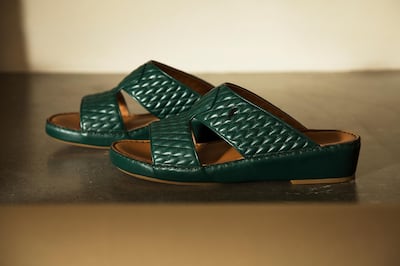
Every Tamashee collection aims to shed light on a different aspect of the region, with its most recent line inspired by the archaeology and inscriptions found in the peninsula.
When asked why preserving tradition is such an important part of the brand’s ethos, Kazim says: “With globalisation, we are all moving in a way that is converging towards one identity. It’s important to differentiate, especially to have a competitive advantage. When you stay true to your history, it helps you stand out in a positive way.”
